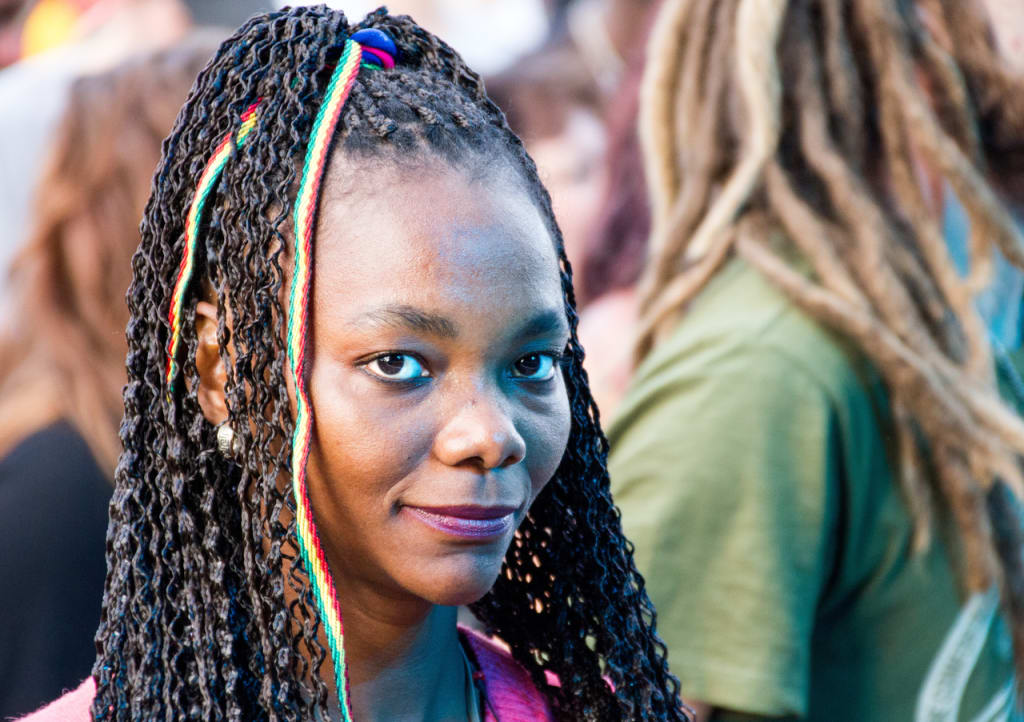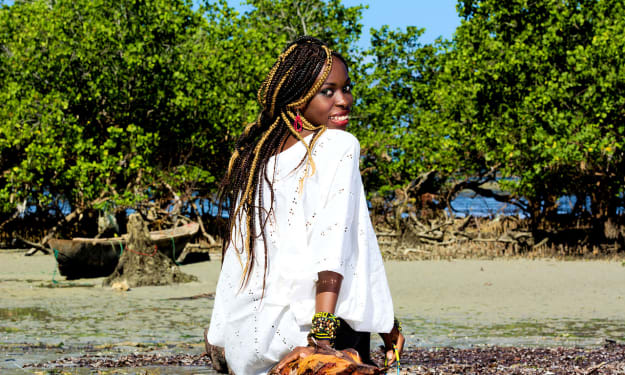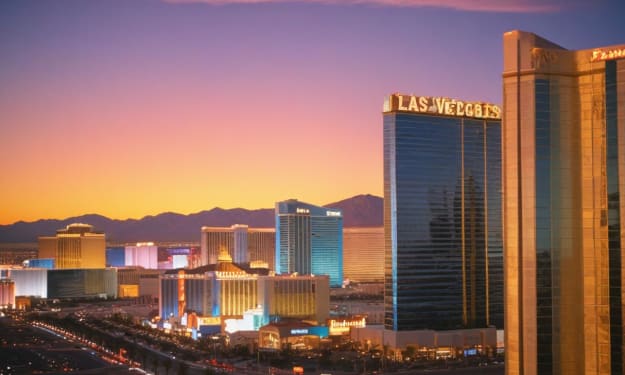How Rastafarian Clothing Empowers the Black Community and Promotes Equality
Exploring the Cultural Significance and Impact of Rastafarian Clothing on Black Identity and Social Justice

Rastafarianism is a spiritual movement that originated in Jamaica in the 1930s and is deeply rooted in African culture and the fight for social justice. It is a way of life that centers on love, peace, and equality, and its followers, known as Rastafarians, are known for their distinctive clothing that incorporates bold colors, natural fabrics, and African-inspired designs.
Rastafarian clothing is not just a fashion statement but a symbol of empowerment and pride for the black community. It serves as a visual representation of their culture and heritage, which is often underrepresented in mainstream media and fashion. The use of natural materials and colors reflects the Rastafarian philosophy of living in harmony with nature and embracing simplicity.
Moreover, Rastafarian clothes promotes social justice and equality. The movement emerged during a time of great social and political upheaval in Jamaica, and it was a response to the oppression and discrimination that black people faced. By wearing Rastafarian clothing, individuals are not only expressing their identity but also standing in solidarity with the black community and its ongoing fight for justice.
In this blog post, we will explore the significance of Rastafarian clothing style in empowering the black community and promoting social justice. We will examine its connection to historical culture and identity, its role in social activism, and its impact on the fashion industry. Ultimately, we will argue that Rastafarian clothing plays a crucial role in promoting equality and empowering the black community.
Rastafarian Clothing and Black American Culture
While Rastafarianism originated in Jamaica, its influence has extended beyond the Caribbean and into the Black American community. Rastafarian clothing has become a way for Black Americans to connect with their roots and express their cultural identity.
Rastafarian clothing often includes symbols of Black pride and resistance, such as the colors of the Pan-African flag, the fist of black power, and images of prominent Black activists and leaders.
It is essential to preserve Black American culture through fashion because it serves as a way to honor and celebrate the contributions of Black Americans to American society. Black Americans have made significant contributions to music, art, literature, and fashion, and their cultural heritage should be celebrated and promoted.
The impact of Rastafarian clothing on the Black American diaspora has been significant. It has provided a way for Black Americans to connect with their history and embrace their cultural identity. Rastafarian clothing has also served as a form of resistance against the oppression and discrimination that Black Americans have faced throughout history. It has been used as a tool for activism and as a way to express solidarity with other marginalized communities.
Rastafarian clothing has played a significant role in preserving and promoting Black American culture. It has allowed Black Americans to express their identity and connect with their long historical culture. Rastafarian clothing has also served as a way to resist oppression and promote social justice.
Rastafarian Clothing and Identity
Rastafarian clothing serves as a powerful symbol of identity and self-expression for black individuals. Rastafarianism, which emerged in Jamaica in the 1930s, is deeply rooted in African culture and traditions. Rastafarians view clothing as a way to express their unique identity and cultural heritage.
Rastafarian clothing features bold colors, intricate patterns, and meaningful symbols that reflect the Rastafarian lifestyle and worldview. For example, the colors red, gold, and green, which are commonly found in Rastafarian clothing, represent the blood, wealth, and vegetation of Africa, respectively. The lion, which is also a popular symbol in Rastafarian clothing, represents strength, courage, and African heritage.
Wearing Rastafarian clothing can have a significant impact on the self-esteem of black individuals. Clothing is an essential aspect of self-expression and can help individuals feel more confident and comfortable in their own skin. Rastafarian clothing empowers black individuals to embrace their cultural identity and celebrate their heritage. It also serves as a reminder of their rich history and the struggles their ancestors have faced.
The influence of Rastafarian clothing extends beyond individual self-expression and identity. It has also had a significant impact on the fashion industry and popular culture. Rastafarian clothing has inspired designers and fashion brands to incorporate African-inspired prints and designs into their collections. The influence of Rastafarian clothing can be seen in mainstream fashion trends, such as oversized t-shirts, baggy pants, and bold accessories.
Furthermore, Rastafarian clothing has also influenced popular culture, including music, film, and television. Many musicians and celebrities have embraced Rastafarian clothing as a way to express their own identity and cultural heritage. The iconic Bob Marley, for example, was known for his signature Rastafarian clothing, which included colorful knit hats and flowing garments.
Rastafarian clothing plays a significant role in shaping black identity and self-expression. It serves as a powerful symbol of cultural heritage, empowerment, and social justice. The impact of Rastafarian clothing can be seen in the fashion industry, popular culture, and individual self-esteem.
Impact of Rastafarian Clothing on Self-Esteem
Clothing is not just a functional item that covers our bodies. It is also a means of self-expression and has a significant impact on our self-esteem. The clothes we wear can affect how we feel about ourselves, how we are perceived by others, and our overall confidence. For black individuals, Rastafarian clothing serves as a powerful tool for boosting self-esteem and promoting self-confidence.
Rastafarian clothing empowers black individuals to embrace their cultural heritage and express their identity. The bold colors, intricate patterns, and meaningful symbols of Rastafarian clothing serve as a visual reminder of the rich history and struggles of black people. This can help black individuals feel more connected to their roots and more confident in their identity.
Rastafarian clothing also promotes self-confidence by challenging traditional beauty standards and fashion norms. The oversized t-shirts, baggy pants, and flowing garments of Rastafarian clothing are a stark contrast to the tight-fitting, revealing clothes that are often associated with mainstream fashion. This can help black individuals feel more comfortable and confident in their bodies, regardless of societal pressures to conform to certain beauty standards.
Personal anecdotes and studies have shown the positive impact of Rastafarian clothing on self-esteem. Many individuals who wear Rastafarian clothing report feeling more confident, proud, and empowered. One study conducted in Jamaica found that individuals who identified as Rastafarian reported higher levels of self-esteem and self-confidence than those who did not identify as Rastafarian.
Moreover, Rastafarian clothing has been embraced by black individuals of all ages, genders, and backgrounds. The widespread adoption of Rastafarian clothing in black communities demonstrates the powerful impact it has on self-esteem and self-expression.
By embracing their cultural heritage and challenging mainstream fashion norms, black individuals can feel more comfortable and confident in their own skin. Personal anecdotes and studies have shown the significant impact of Rastafarian clothing on self-esteem, demonstrating its importance as a tool for empowerment and self-expression.
Rastafarian Clothing in Fashion and Popular Culture
Rastafarian clothing has had a significant impact on mainstream fashion and popular culture. The bold colors, intricate patterns, and meaningful symbols of Rastafarian clothing have become an influential force in fashion and entertainment.
One of the most notable influences of Rastafarian clothing on mainstream fashion is the adoption of the iconic red, gold, and green color scheme. These colors have become synonymous with Rastafarian culture and are often used in fashion to represent black liberation and pride. The vibrant colors of Rastafarian clothing have been incorporated into everything from streetwear to high fashion, showcasing the widespread influence of this cultural movement.
Rastafarian clothing has also influenced popular culture in a variety of ways. One example is the widespread adoption of dreadlocks, a hairstyle that is closely associated with Rastafarian culture. Dreadlocks have become a popular hairstyle choice for individuals of all races, and many credit Rastafarian culture for popularizing this iconic look.
In addition to fashion and hair, Rastafarian clothing has also influenced music and art. Reggae music, which is closely associated with Rastafarian culture, has become a global phenomenon, with artists like Bob Marley and Peter Tosh gaining widespread acclaim. The influence of Rastafarian culture can be heard in the lyrics and rhythms of reggae music, as well as in the fashion and style of reggae artists.
Representation of Rastafarian clothing in media and entertainment has also been significant. Many movies and television shows have featured characters wearing Rastafarian clothing, showcasing the widespread acceptance and influence of this cultural movement. One notable example is the character of Marge Simpson, who famously wore a Rastafarian hat in an episode of The Simpsons.
Rastafarian clothing has had a significant impact on mainstream fashion and popular culture. Its bold colors, intricate patterns, and meaningful symbols have influenced everything from fashion to music to art. The widespread adoption of dreadlocks and the incorporation of Rastafarian color schemes into mainstream fashion showcase the influence of this cultural movement. The representation of Rastafarian clothing in media and entertainment further demonstrates its importance and influence in popular culture.
Conclusion
Rastafarian clothing plays a crucial role in empowering the black community and promoting social justice. Through its connection to African and Black American culture, Rastafarian clothing provides a form of self-expression and identity for black individuals, boosting their self-esteem and confidence. Its influence on mainstream fashion and popular culture showcases the significance of Rastafarian culture in shaping black identity and culture.
The incorporation of Rastafarian color schemes, patterns, and symbols into mainstream fashion demonstrates the cultural impact of Rastafarian clothing. The widespread adoption of dreadlocks as a hairstyle and the representation of Rastafarian clothing in media and entertainment further demonstrate its influence on popular culture.
Moving forward, it is important to continue to celebrate and honor the significance of Rastafarian clothing in fashion and society. By doing so, we can ensure that the cultural identity and heritage of the black community remains preserved and celebrated. In a world where black individuals continue to face systemic racism and discrimination, the power of Rastafarian clothing in promoting equality and social justice cannot be understated.
In conclusion, Rastafarian clothing is not just a fashion statement, but a symbol of empowerment, identity, and cultural significance for the black community. Its continued influence in mainstream fashion and popular culture reinforces its importance and highlights the ongoing impact of Rastafarian culture on society.
About the Creator
Enjoyed the story? Support the Creator.
Subscribe for free to receive all their stories in your feed. You could also pledge your support or give them a one-off tip, letting them know you appreciate their work.






Comments
There are no comments for this story
Be the first to respond and start the conversation.